The recent rise in popularity of live poker brings back memories of the poker boom, and it's no coincidence that cash game streams are breaking one record after another. In February 2023, Patrik Antonius won the biggest pot in the history of American television from Eric Persson. (Now the record has already been updated and belongs to Tom Dwan.) It happened in the PokerGO studio on a stream with the appropriately titled No Gamble, No Future with $1k/$2k blinds, and a $2k BB ante. Phil Galfond contacted Eric and found out what prompted him to try to win nearly a two-million-dollar pot with 0% equity.
Today we will analyze the largest pot in the history of American television. The characters are Patrik Antonius and Eric Persson. I first analyzed this memorable hand myself, and then called Eric Persson and discussed it with him. I will retell his thoughts at the end of the video.
The hand opens with Erik Persson raising from middle position with Q9s. Rob Yong called on the button with A2s and Patrik Antonius in the small blind raised to $30,000 with AKs.
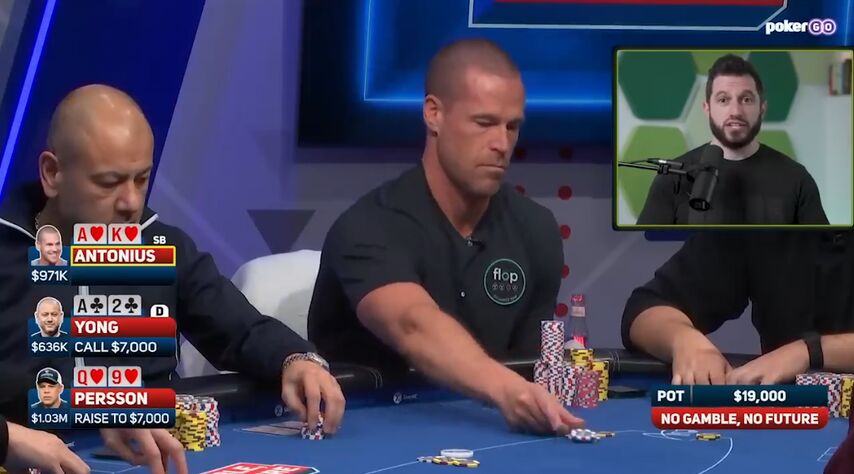
Both opponents call. The stacks are so deep that you can call in position with many suited hands even against this size.
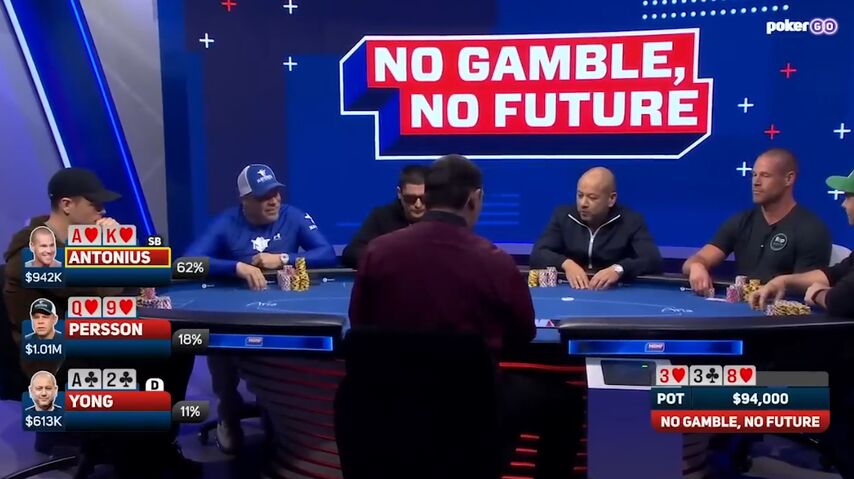
Antonius cbets $40,000 into a $94,000 pot. On paired boards, it is often necessary to be careful, but this depends on the value of the paired card. If we bet the flop, turn, and river big with our overpairs on the board , only stronger hands will remain in the opponent's range at showdown. However, three-of-a-kind 3-bets aren't often called, so the increased c-bet size, approaching half the pot, is pretty logical in our case.
Persson has a choice between raising and calling. I'd be leaning towards calling if I were him, because I have quite a few hands that I want to raise for value. Since Antonius bet not $20,000, but $40,000, I would not raise for value, say, two tens, but would get some from trips – with A3s and , although I really want to just call with them. Yes, I probably wouldn't have a raising range on this board at all. If Persson doesn't want to deprive himself of the raise option, it looks like a reasonable and good play to raise with a queen high flush draw . He reraises to $140,000.
Yong folds, it's up to Patrik.
The first thought is that there is not much to think about, Antonius has a very simple call. Yes, Persson can raise something like and , to understand where he is, and to protect himself from weaker hands. However, we don't want to re-raise bluffs that are often called with hearts. We have A-high, and we can beat bluffs. By 3-betting on the flop, we're just isolating against the strongest part of the range, which won't be easy to knock out.
Patrik, however, 3-bets to $250,000. I think he has two reasons for this.
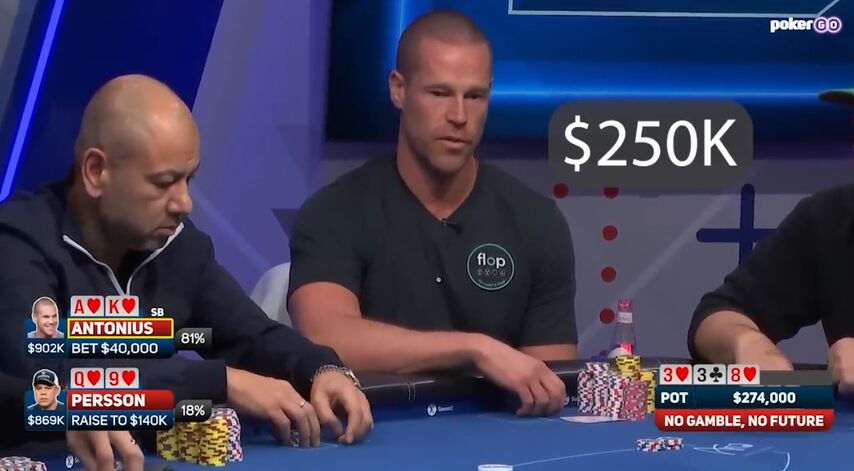
Firstly, Persson is one of the most aggressive poker players in the world, especially post-flop. Patrik is probably giving him a weaker range than he would have put, for example, Robl in the same situation.
Secondly, and this is most likely the main reason, this game had a unique additional rule: it was played for three days, and the participant who won the most by the end of the third day received a special prize of $500,000. That's a lot of big blinds and a great reason to run up the variance. If it's possible to stack with roughly even odds, and with a flush draw and two overcards it's likely, Patrik doesn't mind gambling at all. Another plus is that it allows you to increase the pot against Persson's hand.
Persson can go all-in to knock some hands out of Patrik's range, but calling is a good enough move: a flush draw, two potentially live cards, and position allows it. We call and see the turn.
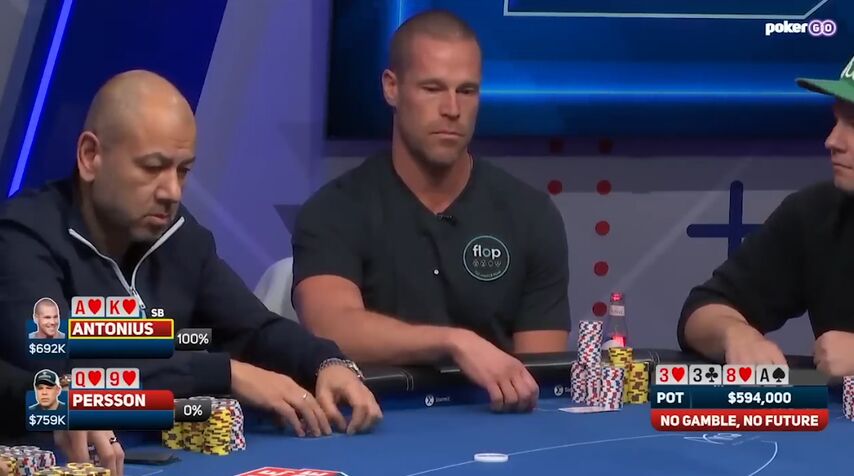
The turn makes Patrik's decision less interesting. I would be curious to look at his choice when say, an off suit ten comes. Yes, by raising the flop, he broke up the variance and increased his chances in the fight for the bonus, but with an SPR of 1.2 on the turn on a blank card, he finds himself in a difficult situation. What to do? Just go all-in, hoping to knock out a hand like two jacks? Check or bet small to leave a flush draw in play? And if a small bet, how to respond to a push?
But instead, he just hits an ace, leaving his opponent with no outs, which is pretty rare in pots this size. Yeah, Persson was very unlucky.
With top pair Patrik has an easy choice. You need to bet, but not big, to leave a flush draw and give Persson a chance to call with a hand like , which he will easily throw out on a push. With Persson won't be able to call all-in either: yes, the hand has equity, but for now, it's just queen-high, and there's not enough equity to pay for a 1.2 pot overbet.
Patrik bets $150,000 – the perfect size. The answer is all-in.
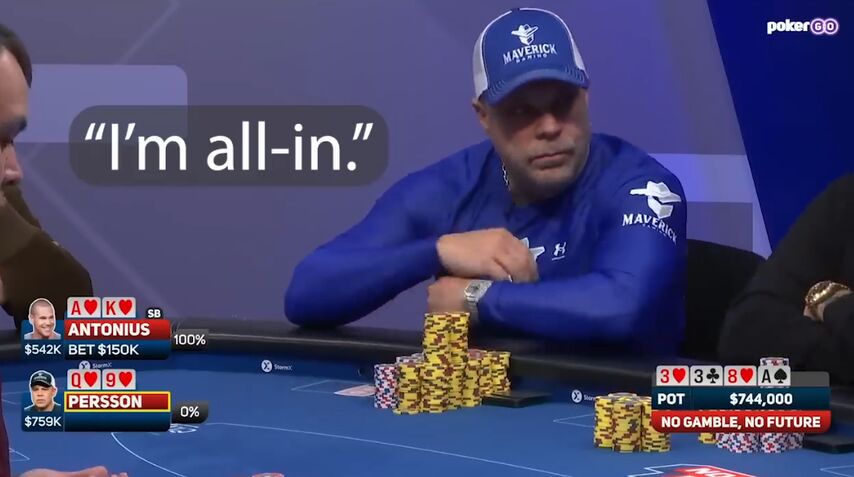
Patrik sighs heavily – the all-in does not seem to delight him.
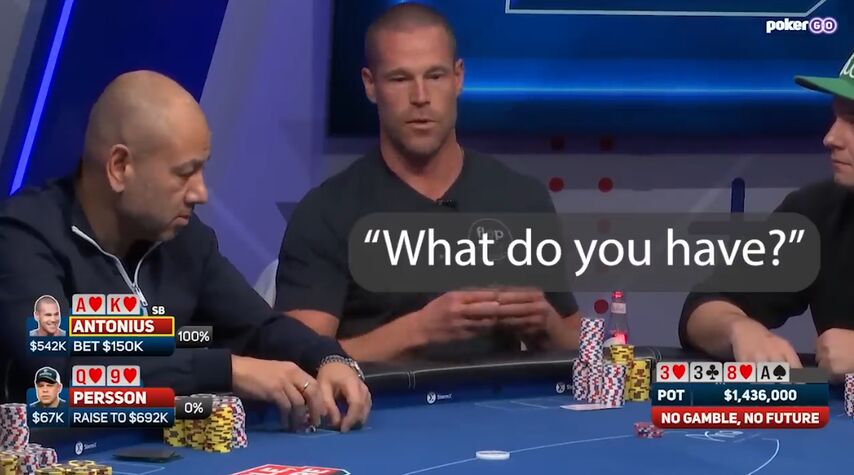
An all-in from Persson is a sign of the same aggression that I spoke about a little earlier. What does he expect? Maybe Patrik or bluff. Maybe he was bluffing on the flop, but he hit an ace, and you can try to take out the ace... Persson has a choice of paying a small bet with a flush draw, or adding about $400k on top and knocking out some of the hands harder. He prefers to go all-in and it's hard for me to judge him. 3-betting the flop made it much more difficult to analyze the hand, and he spent many hours at the table with Patrik, not me.
Antonius thinks for a long time, and I am inclined to believe that if he had without a flush draw, he could find a fold, but with it's too hard. The bulk of Eric's value in this spot is : A3s (even though it's only one combination), 43s, maybe 53s and K3s. What if Eric also winds up 32s and Q3s? Unlikely, of course, but who knows? Yes, against there aren't many outs, but against trips there are two outs for an ace and nine flush cards, which is pretty valuable. 11 outs gives you almost 25%, about the amount you need to call.
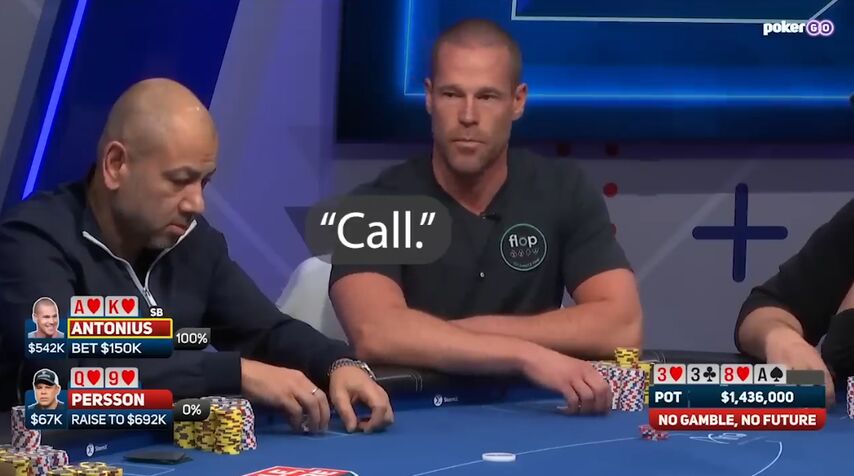
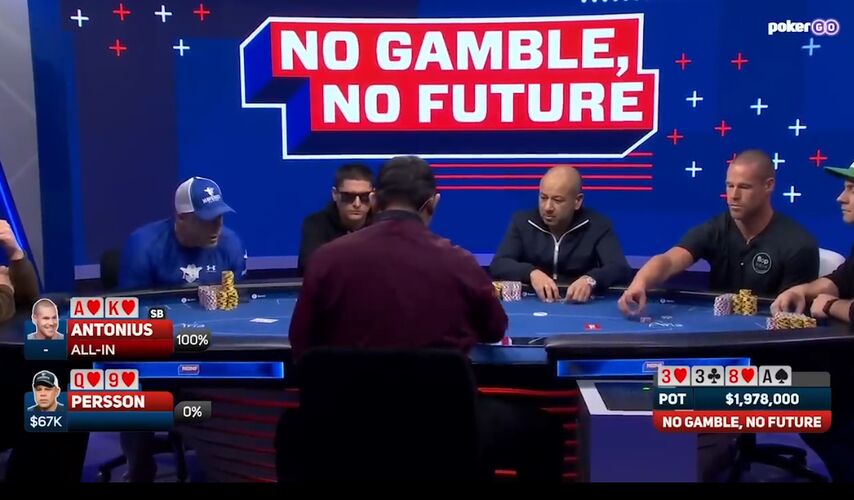
– I have no outs. Crap! Good hand Patrik
Patrik still calls and is happy to know that he has 100% equity – a rarity in these situations. Of course, Persson was very unlucky to run into this particular hand.
What can we learn from this hand to become stronger? First, build your flop raising range around value, in this case, trips and full houses. Patrik is playing an overpair and his range consists of both overpairs and unpaired hands. To effectively raise such a narrow and strong range, you need to raise for value with hands that beat . With the core of the range in place, we move on to picking the right bluffs and hands that raise for defense and thin value. For example, with a low frequency, you can play with jacks this way. Not always, otherwise, Patrik will be able to 3-bet bluff on the flop.
After writing down this analysis, I spoke on the phone with Eric. He said he was very surprised by Patrik's 3-bet on the flop. We agreed that he wasn't likely to play like this often with both value and bluffs. What does he have, how to build his range? Completely incomprehensible!
As for shoving the turn, Eric believed that his all-in made Patrik fold all hands that are weaker than trips, including no flush draw.
Before we talked, I considered his line acceptable, and satisfactory, but after the conversation, I began to like it more. It's just very unlucky to run into the nastiest hand in Villain's range. And give credit to Patrik, who managed to confuse us all with his creative flop 3-bet.
I hesitated for a long time whether to do this analysis or not. Some people watch the hand analysis for fun, others want to learn something. I don’t think that watching such analytics can be considered learning, but I always try to make my videos so that those who want not only to have fun will benefit from my materials. Hope I got it right today.
